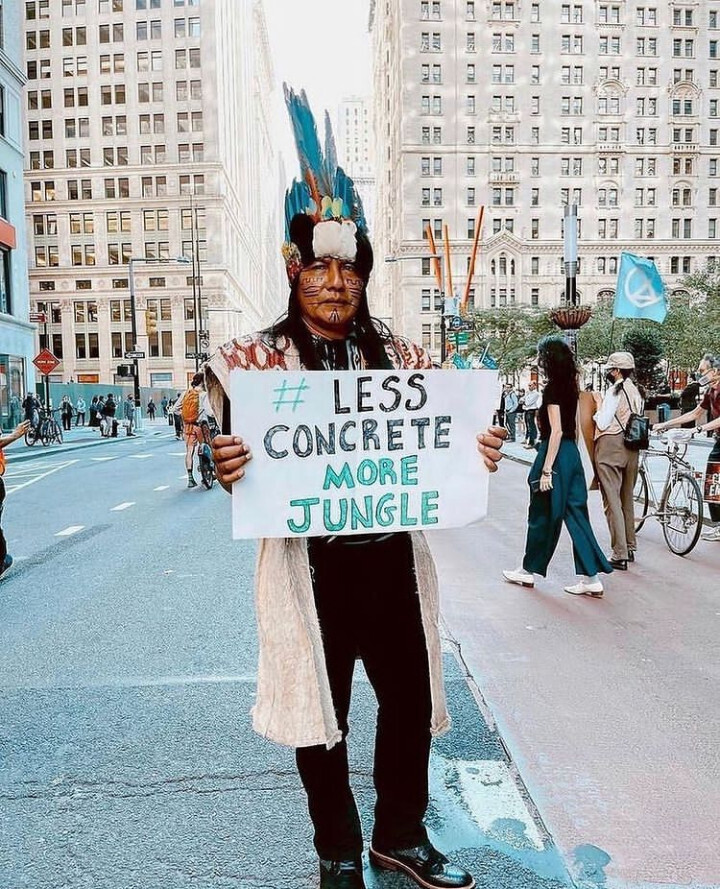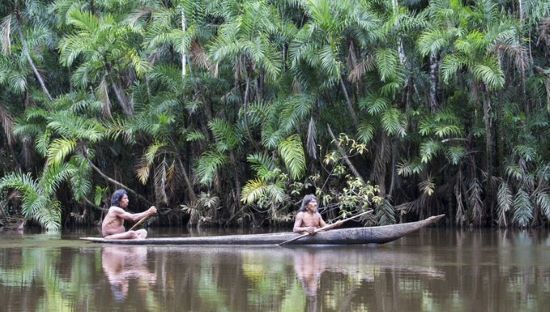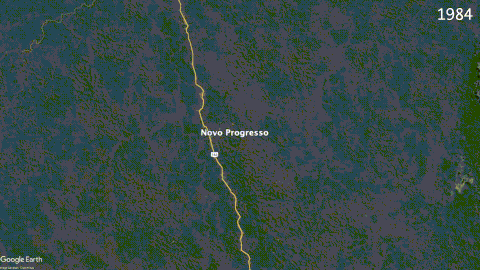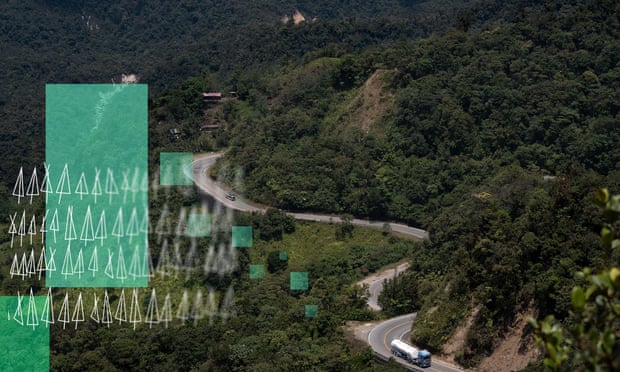4 Likes
1 Shares
We Just Found Something In the #Amazon That Rewrites #History:
Source: https://youtube.com/watch?v=GBqKdqKQd5c
Unusual markings in the Amazon rainforest, suggesting it may have supported a large #human civilization in the #past.
Contrary to common belief, recent discoveries indicate that millions of people, potentially over five million, might have lived in the heart of the #rainforest.
Successful civilizations in other parts of the Americas, like the Aztec and Inca, developed large-scale agriculture, which was thought necessary for permanent settlements.
However, Amazonian inhabitants may have bypassed traditional agricultural requirements, leading to organized communities.
The first European exploration of the Amazon in 1542 by Francisco de Orellana, who encountered advanced human settlements.
Orellana described a remarkable 15-mile-long town, challenging the belief that such civilizations could not exist without European influence.
Following his expedition, subsequent European explorers found the Amazon deserted, reinforcing the narrative that it was sparsely populated.
The arrival of Spanish conquistadors brought smallpox, decimating the indigenous population and leading to the abandonment of cities.
Recent advancements in technology, particularly lidar scanning, have revealed hidden structures in the Amazon, indicating sophisticated civilizations once thrived there.
Reflecting on the potential for even older civilizations that may have existed prior to those documented in history, suggesting a still incomplete understanding of human history.
Unusual markings in the Amazon rainforest, suggesting that it may have been home to a large human civilization in the past, contrary to the common belief that it has never been settled beyond sporadic tribes. The Amazon, vast and dense, has long been considered inhospitable for large settlements, leading scholars to conclude that no significant cities existed there. However, recent discoveries indicate that millions of people, potentially over five million, might have lived in the heart of the rainforest, challenging existing anthropological assumptions. Successful civilizations in other parts of the Americas, like the Aztec and Inca, developed large-scale agriculture, which was thought necessary for permanent settlements. Yet, the Amazonian inhabitants may have bypassed this agricultural requirement, leading to large, organized communities. The discussion sets the stage for exploring these new findings, beginning with the first European exploration of the Amazon in 1542 by Francisco de Arana, who was searching for food and stumbled upon the region.
The journey of Spanish explorer Francisco de Orellana, who, in 1542, accidentally explored the entire Amazon River, witnessing advanced human settlements along its banks. Orellana described a remarkable 15-mile-long town, challenging the belief that such civilizations couldn't exist without European influence. However, after his expedition, subsequent European explorers found the Amazon deserted, leading to a long-held narrative that it was never densely populated. The arrival of Spanish conquistadors brought smallpox, which devastated the indigenous population, potentially killing up to 90% and causing the abandonment of these cities. This loss of life and culture went unnoticed due to the lack of European presence during the epidemic. Recent advancements in technology, particularly lidar scanning, have revealed hidden structures in the Amazon, indicating that sophisticated civilizations once thrived there, interconnected by canals and causeways, contradicting the long-standing belief that the region was sparsely populated.
The existence of a large, organized civilization in the Amazon prior to Columbus, suggesting that it was not just a collection of small settlements but a multi-city society with a hierarchical leadership. Despite the common belief that such civilizations require mass agriculture, the Amazon's poor soil quality challenges this notion. The video posits that instead of traditional farming, these ancient Amazonians practiced a form of gardening, cultivating biodiverse plant species without clearing vast areas of rainforest. As the population grew and large animals and fruit became extinct, they began domesticating certain plants, creating communal garden plots that prevented the rise of elite hierarchies. However, around 2,500 years ago, they innovatively transformed the nutrient-poor soil by adding charcoal and organic materials, creating a fertile soil known as Terra Preta. This allowed for the cultivation of crops on a larger scale without extensive deforestation, supporting large cities. The locations of these fertile patches often aligned with the sites of ancient cities, highlighting a unique form of sustainable agriculture that differed from other civilizations.
The absence of visible ruins in the Amazon when European explorers returned in the late 17th century, despite earlier accounts of advanced civilizations. Diseases like smallpox decimated the population, but the lack of ruins is attributed to the indigenous people building their cities primarily from wood, which rotted away in the humid climate. Archaeological evidence is now revealing a sophisticated network of interconnected cities sustained by advanced gardening and agroforestry practices, challenging the notion that large, complex societies require intensive agriculture. The indigenous Amazonians were skilled engineers and city planners, creating vibrant societies that thrived without extensive deforestation. This challenges the narrative of indigenous peoples as mere caretakers of nature, highlighting their contributions to sustainable practices. Reflecting on the potential for even older civilizations that may have existed before those documented in history, suggesting that our understanding of human history is still incomplete.
Brazil: Keep Deutsche Bahn out of Amazonia!
A destructive rail and port project is taking shape in the Amazon region of Brazil. Germany’s national railway, Deutsche Bahn (DB), is involved. If realized, millions of tons of soy and iron ore will be exported to China, Europe and the USA. The people of Brazil, the rainforest and the coastal mangroves will suffer.
#Protect #Amazon #Brazil #Rainforest #Costal #Mangroves #Petition
https://www.rainforest-rescue.org/petitions/1289/brazil-keep-deutsche-bahn-out-of-amazonia?mtu

1 Country & Western – Reincarnation 4:03
2 #Marmion – Schöneberg 4:00
3 Slam – Positive Education 4:18
4 #OBX – Eternal Prayer 3:01
5 #RobertArmani – Circus Bells 4:48
6 #DeltaLady – Anything You Want 4:33
7 Beyond – Opus 4:08
8 #RebelYouth – What Is Soul? 4:31
9 #ElementsOfTrance – A Taste Of Your Own Medicine (Midi - Evil Mix) 4:29
10 #ArtOfTrance – Gloria 4:30
11 3 Phase vs. Pulse – Rota 3:18
12 #Rainforest – The Birds 3:24
13 #Underworld – Rez 4:30
14 #VinylBlair – Scratch N Sniff 4:26
15 #CaucasianBoy – Northern Lights 4:16
16 Atlantic Ocean – Waterfall 4:13
17 #CJBolland – Camargue 4:20
18 #Jens – Loops & Tings 4:21
19 DJ Tom & Norman – Tales Of Mystery 3:06
https://www.youtube.com/watch?v=Sbmo0pECgMY
https://invidious.fdn.fr/watch?v=Sbmo0pECgMY
#musique #music #technorave #techno #raveparty #compilation #TechnoRaveParty
#Brazilian #Citiziens #destroying a
small #HAARP "Research Facility"
#hidden in the #Rainforest.
U ever wonder from where all the
#Wildfires in the Amazonas spread.
There u go...
burn it to grounds. Hope they
buried them deep!!!
https://t.me/WierdShit/46165
Our local #TemperateRainforest, just down the road.

The #Amazon #Jungle is one of the few tipping points where #humanity can still actively intervene to weaken #climate #change. Unfortunately, the Amazon is still being destroyed and not adequately protected. In view of the fact that nothing less than the survival of humanity and our civilization is at stake, it is beyond comprehension why no significant efforts are being made by the global community to protect it.
#environment #rainforest #forest #nature #protection #earth #future #protest #emissions #co2 #politics
#Environment #Ecology #GlobalWarming #ClimateChange #Brazil #Amazon #Conservation

https://yewtu.be/watch?v=yx6zO6WEzz4
https://www.democracynow.org/2023/8/22/ecuador_blocks_oil_yasuni_national_park
https://www.iflscience.com/ecuador-votes-to-block-amazon-oil-drilling-in-victory-for-uncontacted-tribes-70351
#indigenous #land-rights #ecuador #amazon #rainforest #banned #fossil-fuel #oil-drilling #victory #uncontacted #tribes #huaorani #taromenane #tagaeri #dugakaeri #yasuní #nationalpark #environment #biodiversity #amygoodman #helenagualinga #juangonzalez #democracynow

https://www.theguardian.com/environment/2023/jun/01/brazil-amazon-crime-dom-phillips-bruno-pereira
Source: https://www.wsj.com/articles/indonesia-shows-its-possible-to-tame-rainforest-destruction-f6261f1
Encroachment by #palmOil plantations is sharply reduced by a mix of #government orders, consumer-product-company boycotts and environmental #activism
#politics #environment #nature #economy #climate #protest #protection #news #Greenpeace #agriculture
The Guardian
Investigation into Verra carbon standard finds most are ‘phantom credits’ and may worsen global heating.
The forest carbon offsets approved by the world’s leading provider and used by Disney, Shell, Gucci and other big corporations are largely worthless and could make global heating worse, according to a new investigation. (...)

The Alto Mayo protection forest in Moyobamba, Peru, was supposed to be a flagship offsetting project but has faced human rights issues. Composite: Guardian Design/AFP/Getty Images.
Tags: #climate #climate_change #climate_crisis #co2 #carbon #carbon_offset #verra #dinsey #shell #gucci #rainforest #deforestation #fossil_fuel #global_warming #exhaust #pollution #moyobamba #peru #carbon_credit #phantom_credit #global_heating #forest_carbon_offset